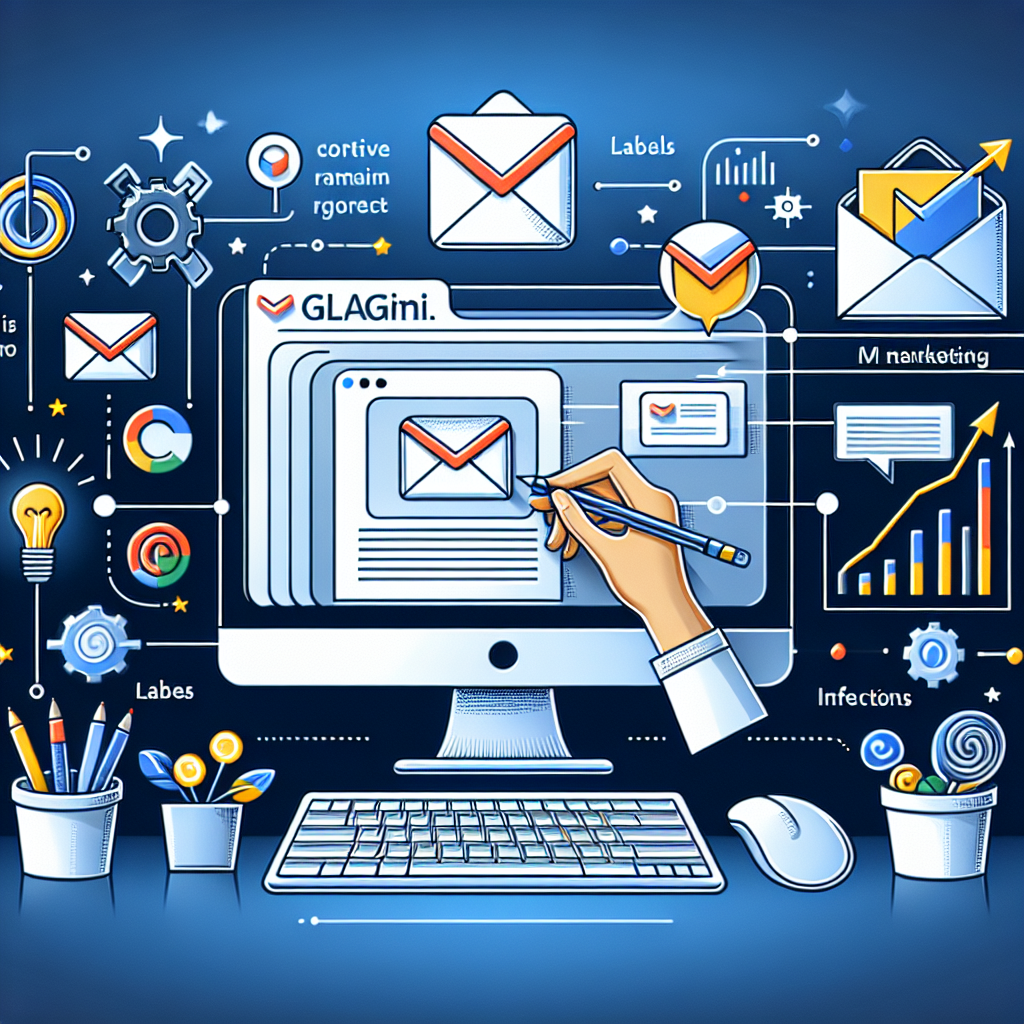Are you looking to expand your email marketing strategies using Google’s popular email platform, Gmail? Look no further! In this article, we will guide you through the process of effectively using Gmail for email marketing. From organizing your contact lists to crafting engaging email content, you will learn the essential tips and tricks to successfully reach your target audience and achieve your marketing goals. So, grab your Gmail account and get ready to take your email marketing to the next level!
Setting up a Gmail Account for Email Marketing

Creating a new Gmail account
To start your email marketing journey with Gmail, the first step is to create a new Gmail account if you don’t already have one. Visit the Gmail website and click on the “Create account” button. Fill in the required information such as your name, desired email address, password, and phone number. Once you’re done, click on the “Next” button and follow the on-screen instructions to complete the account creation process.
Customizing your Gmail settings for email marketing
After creating your Gmail account, it’s important to customize your settings specifically for email marketing purposes. Go to the settings by clicking on the gear icon in the top right corner of the Gmail interface and selecting “Settings” from the dropdown menu. Here, you can tailor your email marketing settings, including enabling the “Undo Send” feature, setting your time zone, and configuring email forwarding options.
Setting up an email signature
Creating an email signature adds a professional touch to your email marketing communications. To set up your email signature, go to the Gmail settings and scroll down to the “Signature” section. Here, you can create a personalized signature by adding your name, company details, and any other relevant contact information or promotional links. You can even include a logo or an image to make your signature visually appealing. Once you’re satisfied with your signature, make sure to save the changes.
Building an Email List
Creating a targeted audience
To have a successful email marketing campaign, it’s crucial to have a targeted audience. Consider your target market and determine the demographics, interests, and preferences of your potential subscribers. By understanding your audience, you can create content that resonates with them and increases engagement.

Using lead magnets to capture email addresses
A lead magnet is a valuable piece of content or an incentive that you offer to your website visitors in exchange for their email addresses. This can include e-books, free guides, templates, exclusive discounts, or access to gated content. By providing something of value, you can attract potential subscribers and collect their email addresses to grow your email list.
Importing existing contacts to Gmail
If you already have a list of contacts that you would like to include in your Gmail account for email marketing purposes, you can easily import them. Go to the Gmail settings and select the “Accounts and Imports” tab. Here, you can import contacts from various sources, such as CSV files or other email accounts. Follow the prompts and instructions provided to import your existing contacts to your Gmail account.
Creating Engaging Email Campaigns
Choosing the right email template
When creating an email campaign, it’s important to choose the right email template that aligns with your brand and the purpose of your campaign. Gmail offers a range of pre-designed templates that you can customize to suit your needs. Consider the type of content you want to deliver, whether it’s a newsletter, promotional offer, or a personalized message, and select a template that best showcases your content.
Crafting compelling subject lines
The subject line is the first thing your subscribers see in their inbox, so it’s crucial to craft compelling subject lines that grab their attention. Keep your subject lines concise and engaging while accurately reflecting the content of your email. Experiment with different wording, personalization, or the use of emojis to stand out in crowded inboxes and increase email open rates.
Personalizing the email content
Personalization is a key element in engaging email campaigns. Addressing your subscribers by their names and tailoring the content based on their preferences or past interactions can make your emails feel more personalized and relevant. Use merge tags to dynamically insert the recipient’s name or other personalized details throughout the email content. This shows your subscribers that you value their individuality and builds a stronger connection with your audience.
Adding visually appealing elements
Visual elements such as images, videos, or infographics can enhance the visual appeal of your emails and make them more engaging for your subscribers. However, ensure that the visual elements are relevant to your content and do not overpower the message. Use clear and high-quality visuals that load quickly to create a visually pleasing email that captures your subscribers’ attention.
Optimizing for mobile devices
With the increasing use of mobile devices for email consumption, it’s crucial to optimize your email campaigns for mobile viewing. Ensure that your email templates are responsive and adapt to different screen sizes. Use a single-column layout, larger fonts, and clear call-to-action buttons to make it easy for mobile users to navigate and interact with your emails. Preview and test your emails on multiple devices and email clients to ensure a seamless mobile experience for your subscribers.
